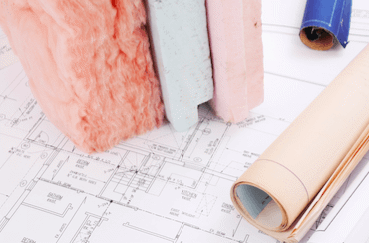When was the last time you took time to check your insulation? For many homeowners, the likely answer is: “Never.” The type and amount installed at original construction of your home may well have met the standards of that time, when energy was far less costly. By todayandrsquo;s U.S. Department of Energy recommendations, however, your home may now be under-insulated. You may be paying unnecessarily higher energy bills as well as putting up with sub-standard indoor comfort.
HOW MUCH DO YOU NEED?
Insulation is rated by the R-value of the material per inch of installed depth. The higher the R-value, the more effectively the material retards heat transfer through the ceiling and walls. For the South Bay Peninsula and Santa Cruz (Climate Zone 3), DOE recommendations call for insulating to a level of R30 to R60 in the ceiling and R13 to R15 inside exterior walls.
WHAT TYPE?
Common household insulation types includes fiberglass batts, those familiar roll-out blankets of fluffy, cotton candy-like material. Other common varieties that are blown-in under air pressure include loose-fill fiberglass or cellulose, which is composed of pulverized paper particles that resemble mounds of snow.
HOW TO CHECK YOUR INSULATION
Climb up into the attic with a yardstick. Make sure you wear long pants and long sleeves as well as a face mask for protection against insulation fibers. Also, step only on walkway boards in the atticandmdash;NOT on beds of insulation that may collapse under your weight. Measure the depth of fiberglass batts or loose-fill insulation. To meet current DOE standards, batts should be 10 to 20 inches deep while blown-in fiberglass or cellulose loose-fill should be 8 to 16 inches deep.
Checking insulation inside exterior wall cavities is more problematic for a do-it-yourselfer. Small access holes and an inspection scope are generally required to determine type and thickness. For more professional results, a qualified HVAC service technician can use infrared imaging to view heat loss through walls and accurately estimate insulation content without access holes.
For experienced advice and qualified service to check your insulation, contact Valley Heating, Cooling, Electrical.
Our goal is to help educate our customers in the South Bay Peninsula and Santa Cruz areas of California about energy and home comfort issues (specific to HVAC systems).

